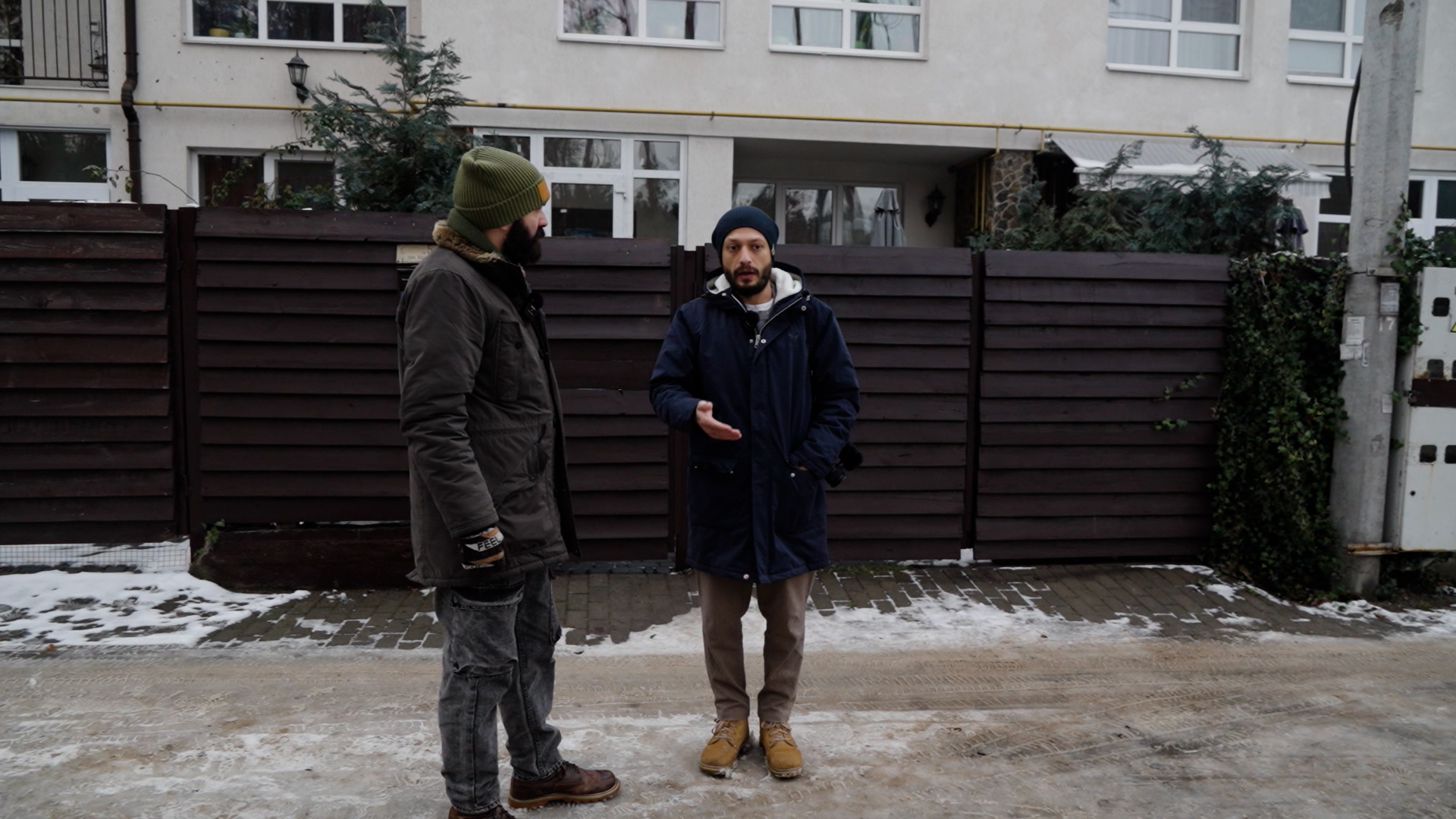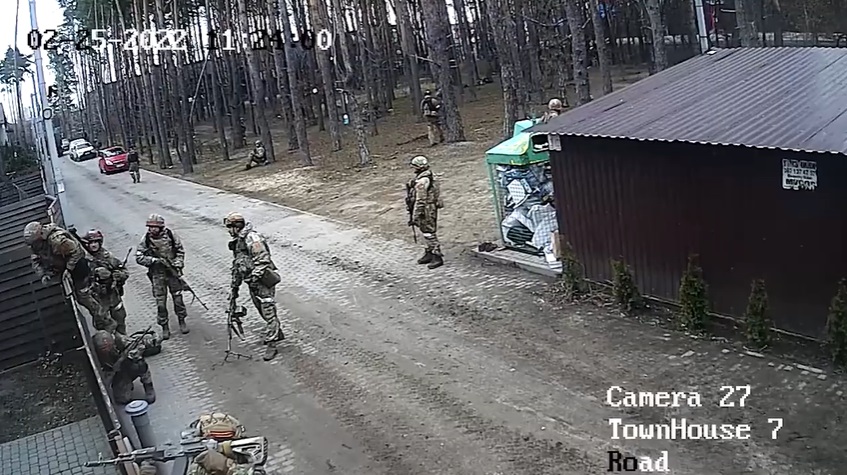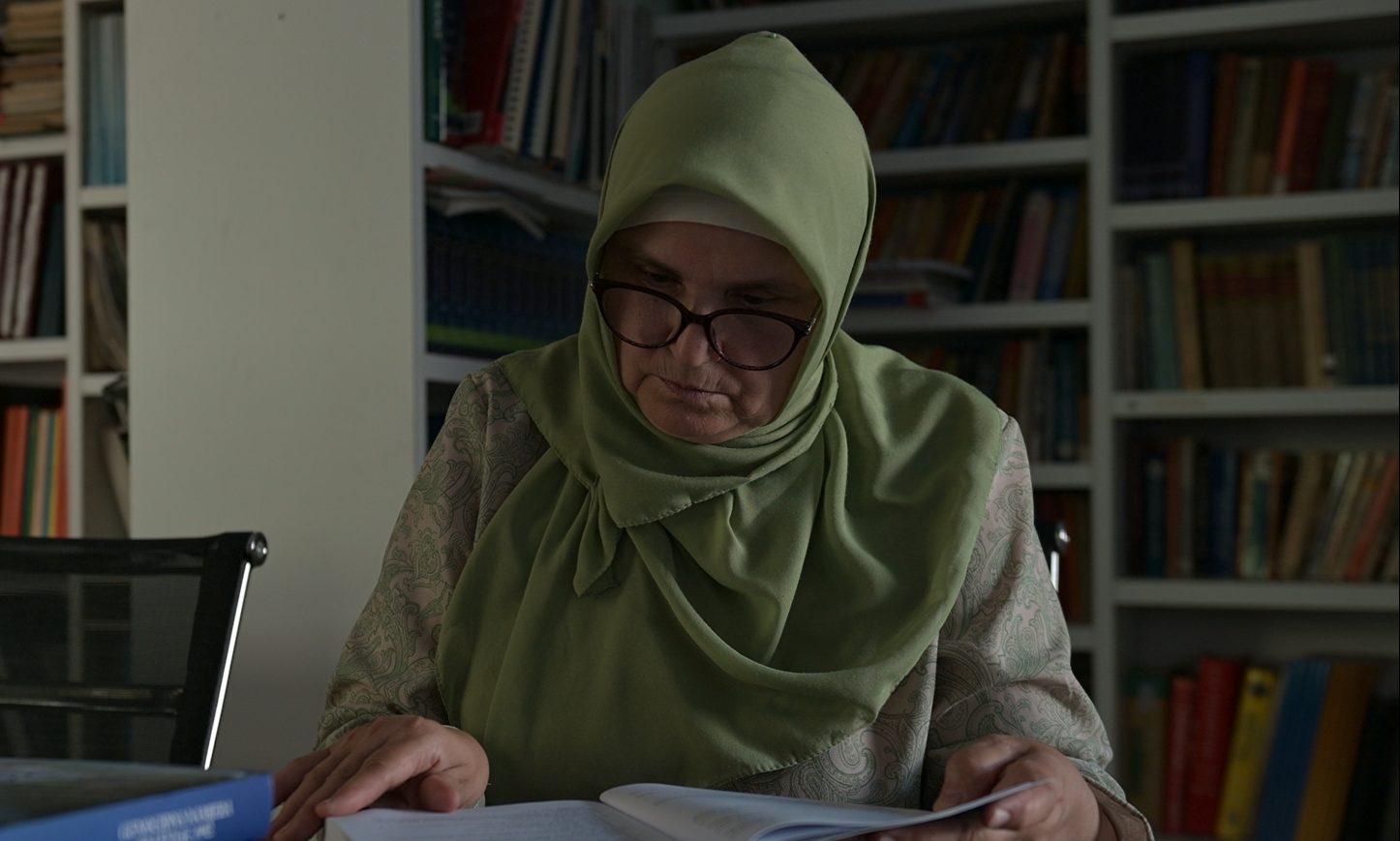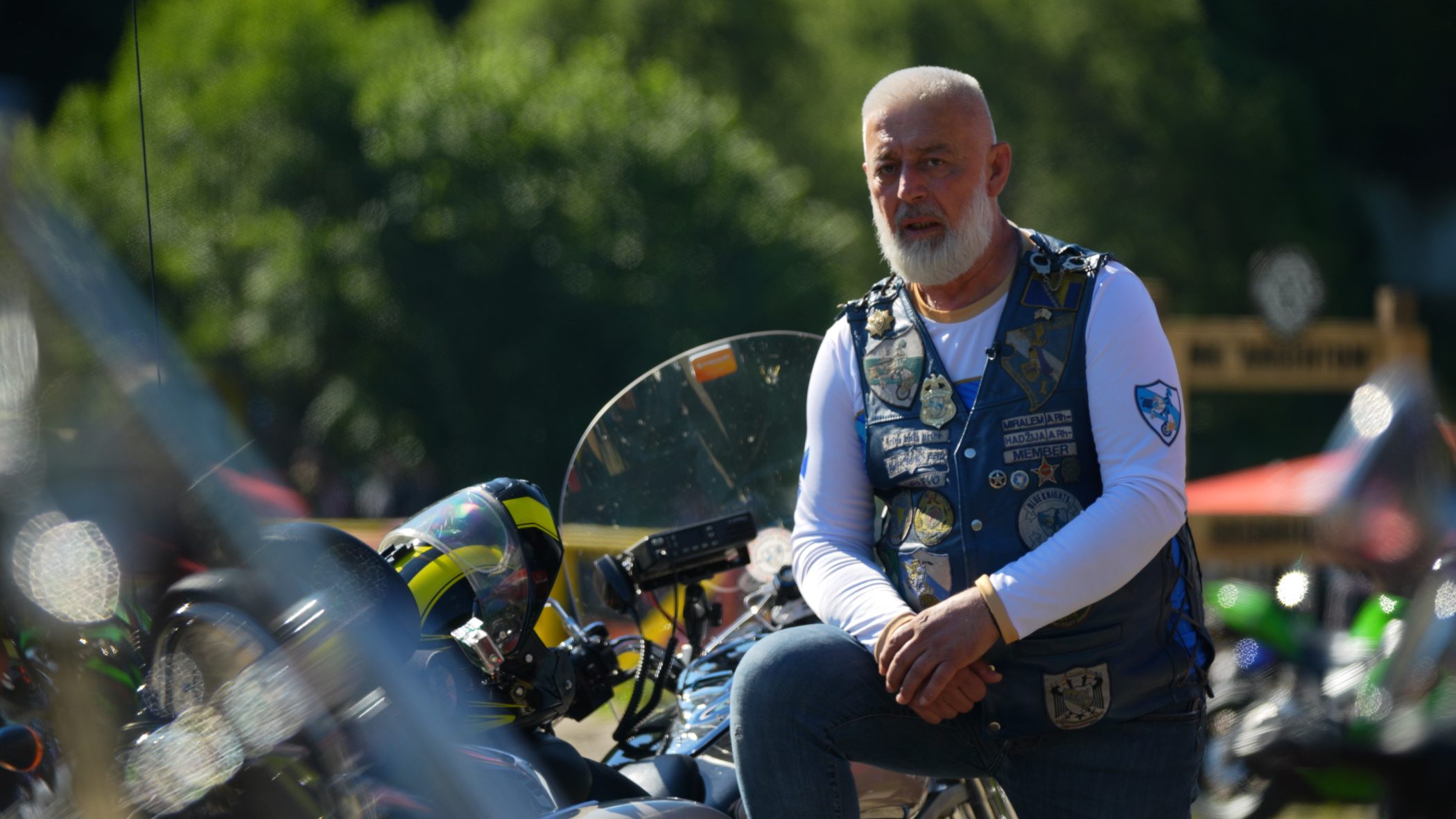This post is also available in: Bosnian
On March 4, 2022, Ivanov was killed by Russian soldiers in front of his house. A few metres away, at the edge of a small forest running through Hostomel, an acquaintance of Ivanov’s managed to bury him despite the flurry of bullets and projectiles.
“I witnessed Russians entering my home, Russians starting to kill people on this road in front of us and screaming at my neighbours, forcing them out of their houses,” Taras said, describing the events that led to his passionate desire to collect evidence about what happened in his neighbourhood and to seek justice.
Right before the Russian army arrived, Taras and his family managed to flee to a safer location.
Nonetheless, despite not being there, he watched the arrival of Russian units live on a surveillance camera in his apartment. His camera, along with other cameras along the street, became central evidence against the Russian soldiers.
“That was the first motive. I was very angry ever since they started the invasion, but then I became even more angry when they entered my home and shot people. Now, after more than a year and a half has passed, you can see that such information has become ‘normal’ – people being pushed out of their houses, killed and tortured – but it is not normal,” Taras said, before taking the Detektor crew to the place where his neighbour Oleg Ivanov was executed.
Teaming up with the police
 We talked to Taras Lazer at the scene of his neighbor’s murder. Photo: BIRN BiH
We talked to Taras Lazer at the scene of his neighbor’s murder. Photo: BIRN BiH
Around the time Taras and his filmmaker team DENOTAT began reviewing surveillance camera videos along the street, as he was investigating and documenting the events that led to Ivanov’s murder, he heard that Russian soldiers had committed other crimes as well. Particularly, he heard that they had killed a number of civilians by shooting at moving cars at a crossroads near his house.
He got the main department of national police from Crimea involved, as they were the only ones who could request access to surveillance cameras from a nearby shopping mall.
The investigation became official. The police and prosecution determined that shootings aimed at 10 vehicles had resulted in at least five civilians being killed. The first victim was Russian, the second was German, and the others were Ukrainians, Taras said.
“I had to switch from my neighbour’s story to this larger story about the Russian troops killing people on the road here. I have already gathered all the necessary information. I have recorded more than 100 hours of interviews, witnesses. I have spoken to everyone, to each victim of the crime that happened here or to the relatives of those killed,” Taras said.
The testimonies were turned into the documentary film “The Intersection”. What he discovered jointly with the police is now part of the evidence against the Russian units.
From February 25 to early March, members of a Russian special police unit OMON, from several Russian towns, were present on Taras’ street. When the unit withdrew in March 2022, they left behind numerous documents and items which were used to identify individuals and the specific unit.
“The Russians were identified, their commander was identified, their deputy commander was identified and so were a policeman and many shooters. They are already under suspicion, which means that they are suspected of having committed war crimes. For now, we have five suspects and they are on trial before the Irpin court,” said Taras.
Justice more important than glory
 Screenshot of surveillance camera footage taken at the time of the arrival of Russian soldiers. Photo: YouTube/The Intersection
Screenshot of surveillance camera footage taken at the time of the arrival of Russian soldiers. Photo: YouTube/The Intersection
Unexpectedly, the investigation broadened further.
After having discovered the identity of the perpetrators, Taras and the investigators reached out to people who had survived crimes in nearby places, including the Hostomel Airport. All of them identified members of a OMON unit as perpetrators of war crimes.
A total of 5 people were killed in Taras’ neighbourhood. At the place where Oleg Ivanov was buried, there is now nothing that might suggest a war crime, and the same goes for the nearby shopping mall and the crossroads, where random passers-by were killed, including a boy who was being driven by his grandmother. She thought that as civilians they would be protected.
Not far away though stands a few burnt houses still containing scattered personal belongings of former residents. Among them one can see toys and a motorcycle.
What contributed to Taras getting close to the police investigative bodies was the trust he earned from them. As he explains, he does not consider himself a journalist in the usual sense, because he is an independent cameraman by profession and a documentary maker. Taras says that this makes him trustworthy, and better able to connect with witnesses.
“I have no editorial rules. You know, I set up my own rules. And my rules are that, if we can establish, identify and discover more Russians – at least to give some hope for justice to people who have survived, whose families were killed or tortured or whatever – I will do that,” Taras said. “Because to me people are more important than, you know, glory or the any award.”


